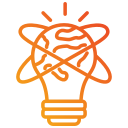
The Impact of Quantum Computing on Future Industries
Chosen theme: The Impact of Quantum Computing on Future Industries. Explore how qubits, algorithms, and emerging hardware may reshape sectors from drug discovery to logistics, and learn how to get quantum-ready. Join the conversation, subscribe for updates, and share your industry’s biggest quantum questions.
From Qubits to Advantage
Qubits exploit superposition and entanglement, enabling parallel exploration of solution spaces that classical bits traverse sequentially. While practical advantage is selective today, high-value problems in chemistry, optimization, and machine learning make industries eager to pilot hybrid approaches. What use case might transform your sector first? Share your ideas and subscribe for deep dives.
Near-Term vs. Fault-Tolerant Horizons
We live in the noisy intermediate-scale quantum era, where error-prone devices require clever algorithms and hybrid workflows. Long term, error-corrected machines could unlock breakthroughs in cryptography, materials, and modeling. Comment with your organization’s horizon—pilot now, watch closely, or invest in fault-tolerance research.
A Story of Complexity Reimagined
A materials lab once waited weeks for high-accuracy simulations of complex molecules. With variational quantum techniques on cloud hardware, early prototypes trimmed exploration time, guiding classical runs more strategically. The results weren’t perfect, but the team learned faster. Would you try a similar hybrid experiment? Tell us how.
Pharmaceuticals and Materials Discovery

Quantum algorithms like variational eigensolvers aim to estimate ground-state energies and binding affinities with improved fidelity. Better accuracy could reduce failed candidates earlier, saving time and costs. If you work in R&D, which target would you test first? Share your pipeline priorities and subscribe for case-study breakdowns.
Finance, Risk, and Optimization
Quantum-inspired and quantum-native approaches reframe allocation as combinatorial optimization, exploring trade-offs among return, risk, and constraints. Early trials mix quantum heuristics with classical solvers to prune massive search spaces. Which constraints limit your models today? Share your toughest requirement so we can explore it together.

Logistics, Energy, and Smart Infrastructure
Vehicle Routing and Supply Chains
Quantum optimization frames vehicle routing with time windows, capacities, and disruptions in unified formulations. Hybrid solvers can yield better routes or faster re-optimization during shocks. What’s your biggest routing pain—traffic volatility, driver shortages, or emissions targets? Share your reality so we can prioritize examples.
Energy Grid Balancing and Markets
Balancing supply, demand, and storage across distributed assets is a grueling optimization task. Quantum-assisted approaches may improve unit commitment, congestion management, and market clearing. Energy professionals, which constraint keeps you up at night? Tell us and subscribe for grid-centric walkthroughs.
Urban Mobility and Infrastructure Planning
Cities juggle transit schedules, maintenance windows, and budget constraints. Quantum-influenced models can propose resilient plans under uncertainty, then refine with real-time data. If you manage infrastructure, what metrics—reliability, cost, equity—matter most? Comment to help shape a city-scale quantum pilot blueprint.
Cybersecurity and the Post-Quantum Transition
While timelines are uncertain, harvest-now-decrypt-later threats mean sensitive data must be protected before large-scale quantum arrives. Inventory cryptography, prioritize high-value systems, and plan hybrid defenses. What data would be catastrophic if exposed in the future? Share your migration concerns with the community.

Quantum kernels can separate classes in spaces difficult for classical models, but benefits are problem-specific and hardware-limited. Careful benchmarking against strong baselines is critical. What dataset would you nominate for an honest head-to-head? Share links and subscribe to join a community test.

Successful teams use quantum circuits for feature extraction, then train classical models for robust generalization. This division balances noisy devices with mature tooling. If you build ML pipelines, where could a quantum block slot in? Comment your architecture and we’ll propose integration patterns.

One fintech startup tried a quantum-enhanced anomaly detector for transaction streams. Gains were modest but actionable, revealing clusters missed by baselines. The real win was learning a repeatable evaluation process. Would you accept incremental lift if it improved investigation workflows? Tell us how you would measure it.



